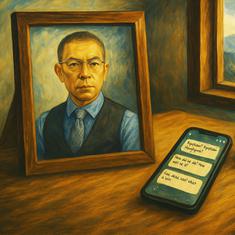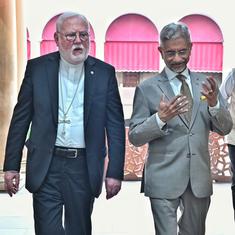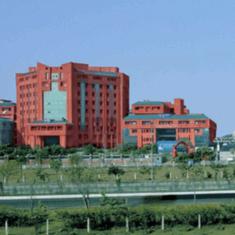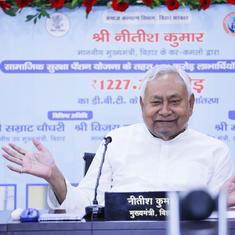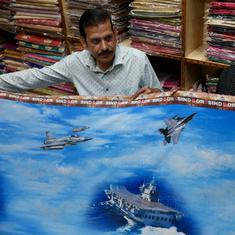In a particularly revelatory moment in the “Preface” to his 1789 translation of Kalidasa’s Sakuntala, British linguist William Jones (1746-1794) recounts an incident when a Brahmin named Rádhácánt (Radhakanta Sarman), “who had long been attentive to English manners”, surprised him with the information that the Indian nátacs were similar to English plays. Upon enquiring further, Jones is enlightened by Rádhácánt that the “most universally esteemed” of the nátacs was Kalidasa’s Sakuntala.
Jones’s translation of Sakuntala would go on to become a massive literary sensation across Europe with admirers like the famous German author Goethe, making him arguably the foremost Orientalist of his age.
What the preface reveals (perhaps inadvertently) is that the Brahmin was aware of the English play as a literary genre and its similarity with the nátac before Jones had even read Kalidasa. He had successfully made this cultural translation before the celebrated Orientalist and polymath had embarked on his mission. However, while Jones is credited with introducing the Western world to Indian literature, Rádhácánt has remained largely unknown.
It was this episode from 1789 that I was reminded of while reading Sreeparna Chattopadhyay’s “Research Assistant Wanted” (Scroll, January 15), which highlights the colonial origins of exploitative academic practices in the contemporary world.
In this response to Chattopadhyay’s essay, I suggest that the academic vulnerability of underpaid and unacknowledged research assistants from the Global South can be understood by exploring the early phase of Western scholarly research in India, whose origins can be traced back to the Asiatic Society of Bengal: established in 1784 with Jones as the founding President and Governor General Warren Hastings as its patron.
Scholars such as Kate Teltscher (India Inscribed, 1995), Bernard Cohn (Colonialism and Its Forms of Knowledge, 1997), and Miles Ogborn (Indian Ink, 2007) have emphasised the central role that Orientalist philology played in the administration of Empire. They have also stressed on the fact that this knowledge was co-produced – in the form of translations, dictionaries, and textbooks – as a collaborative effort between the East India Company officials and the Indian pandits, munshis, dubashis, and maulvis employed by them.

While this relationship between the British and their native assistants was asymmetric in nature due to the obvious power imbalance of imperialism, scholars have insisted on acknowledging the intellectual debt that 18th-century celebrities such as Jones owed to Indian scholars.
The case of native pandits and local informants such as Caveli Venkata Boriah (who assisted India’s first Surveyor General Colin Mackenzie and was amongst the first Indians to write and publish in English) offers historical antecedents to that of modern research assistants, and their obscurity is a testament to the shaping influence of Empire on global academic practices over the centuries.
The issue boils down to fundamental questions of the value and utility of knowledge, credit for intellectual labour, and rewards (either professional or monetary) for academic contribution. Equally at stake is the recognition and acknowledgement of the collaborative mode of producing and disseminating knowledge.
In Jones’s India, these issues were determined by the dynamics of imperial power, which rested on the East Indian Company, whose prerogative it was to decide what forms of knowledge should be deemed valuable and considered useful, and whether or not to recognise and reward these native assistants in the project of Empire.
This differential valuation of academic labour can be seen in the salaries paid to the teachers at the Fort William College in Calcutta (established in 1800). Bernard Cohn informs us that the salaries for the Europeans ranged between Rs 500 and Rs 1,600, while it was between Rs 60 and Rs 200 for native munshis. Miles Ogborn presents a similar picture of the East India Company’s press in Calcutta, where William Rees, a British compositor was paid Rs 100, while Mooktaram Doss, his Indian counterpart and amongst the longest-serving employees, was paid Rs 22.
The “precariously employed” workers of low and middle-income countries being unfairly treated by graduate students and researchers form the Global North that Chattopadhyay refers to, are perhaps not very different from Indians employed in the Fort William College or the East India Company press. They remain vital for information gathering and knowledge production yet conveniently dispensable in a structure dictated almost entirely by systems of political and financial patronage.
The issue of fair wages for graduate students and postdoctoral researchers came into global limelight recently when around 48,000 students and researchers of the University of California system protested in late 2022 and early 2023 for basic rights such as housing and healthcare. These protests, widely considered the largest of its kind in the history of American academia, have raised hopes of greater resistance against exploitative practices in the global higher education system.

The value of knowledge is determined in these instances by political as well as institutional considerations. The information gathered either by native assistants in British India or by present-day research assistants for Western academics accrues value and legitimacy through institutional mechanisms such as journal publications and books, where these non-Western contributors are seldom acknowledged or credited among the authors.
They are relegated to the margins of the academy, which is steadfastly guarded by these institutional mechanisms. The issue of attributing authorship for research is as much a concern in India as it is in the West, as unethical practices such as “gift authorship” in our premier institutions remain rampant, unreported, and unaddressed.
The first volume of the Asiatic Researches (1788), the journal of the Asiatic Society, published an essay titled “On the Literature of the Hindus”, which is “communicated” by Goverdhan Caul and is translated with a commentary, by William Jones. Caul’s role in the essay is made ambiguous by the word “communicated,” which does not credit him with authorship or even a token co-authorship with Jones.
This essay, however, is included in collections of the works of William Jones, presenting a similar case as that of Rádhácánt in the preface to Sakuntala. Despite contributing to the Asiatic Researches since its first volume, Indians were first admitted into the Asiatic Society as members only in 1829.
Institutions such as the Asiatic Society and publications such as the Asiatic Researches, which were established towards the end of the 18th century – the age of revolutions, the Enlightenment, and the birth of the modern world – represent a key stage in the subsequent emergence of the academia in the European mode in the Global South.
This origin story offers a genealogy of contemporary academic (mal)practices while highlighting the remarkable endurance of the global circuits of power and influence that have shaped and sustained the academic world as we recognise it today.
Atul V Nair is a doctoral candidate at the Department of English in the University of Hyderabad. He is an Editorial Assistant with Indian Writing in English Online, and a Project Assistant with the UNESCO Chair in Vulnerability Studies, UoH.


